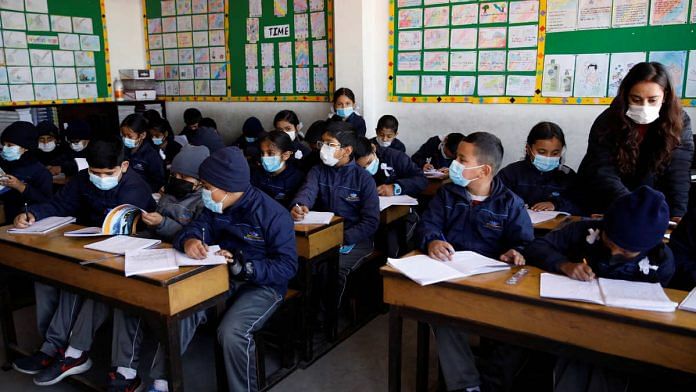New Delhi: The long-term impacts of Covid-19 on children may go far beyond health, a new article published by the Indian Journal of Medical Research (IJMR), a peer-reviewed medical journal, has said in its conclusion.
The ‘review article’, published on 17 July, corroborates studies and research done on children across the world amid the Covid-19 pandemic.
The impact of Covid-19 in children “may go far beyond health including psychosocial, economical and educational and others that are beyond the scope of this article”, said the report titled ‘Coronavirus disease 2019 in children: Clinical & epidemiological implications’.
“COVID-19 in children poses challenges different from adults…Far-reaching socio-economic, political and environmental effects (in children) are likely, and the post-COVID-19 pandemic world is not going to be the same,” the article noted.
“At present, it is uncertain how long the pandemic may continue and what the long-term effects. It would be interesting to observe how children, whether infected or uninfected, grow up in the post-COVID-19 pandemic world,” it added.
It primarily stressed on “the psychosocial effects of quarantine, closure of schools, lack of play activities and impact of lockdown” on the children and suggested further studies to estimate the impact.
Written by five authors — Vijesh Sreedhar Kuttiat and Philip Raj Abraham from ICMR’s Vector Control Research Centre, Ramesh P. Menon from AIIMS in Delhi, Pankaj C. Vaidya from Chandigarh’s Postgraduate Institute of Medical Education & Research and Manju Rahi from ICMR’s Epidemiology & Communicable Diseases division — the manuscript has been reviewed by Dr Ashwani Kumar, director, ICMR-Vector Control Research Centre.
Also read: Fingerprick antibody test with ‘98.6% accuracy’ could see mass rollout in UK by year-end
Why children have been spared from severe Covid infection
The ‘review article’ noted that children’s immune systems are generally immature, making them susceptible to respiratory viruses such as influenza. However, the “relative sparing of children and the mild nature of COVID-19 in them have perplexed the epidemiologists, clinicians and scientists alike”.
It added that while there are “no clear answers” to this conundrum, several theories and hypotheses have emerged that include the role of childhood vaccinations, role of other human coronaviruses and other infections in children.
The researchers explained that children receive several doses of different vaccines as part of the universal immunisation programme, and “whether the resulting immune stimulation has any role in protection from COVID-19 needs to be elucidated”.
Cross-protection by antibodies generated following measles vaccination and cell-mediated immune response generated by BCG vaccination also need evaluation, the article noted.
Furthermore, the latching process of the virus through its spike protein, could be different in adults compared to children.
The difference in immune systems of children and adults may lead to a “possibility that children are not mounting an intense inflammatory response, and hence, the host-mediated damage is limited,” said the article.
Also read: Ganga Ram Hospital waives Covid patient junior doctor’s Rs 4-lakh bill after father’s letter
Risk among children and common manifestations
The article highlights that mostly “younger infants and those with comorbidity were found to be at risk of severe illness”. In fact, infected pregnant women and neonates “were reported to have good prognosis”.
“The global data showed that the proportion of children among the total number of COVID-19-affected patients was small and most children developed mild illness,” it said.
The article added that “a significant percentage of asymptomatic infection in children has epidemiological implication as these may act as links in the transmission chain in the community”.
The researchers quoted a study from China, which noted that children aged below 10 years are as susceptible to the virus as adults, but they are unlikely to develop a severe infection.
Among the children infected, a spectrum of manifestations was seen with varying grades of severity including asymptomatic, mild, moderate, severe and critical illness. “A few deaths were also noted,” the study mentioned.
“Majority of the children develop only a mild illness, and present predominantly with fever and dry cough. Upper respiratory symptoms such as cold, nasal congestion and sore throat are less frequent. Severe cases manifest as dyspnoea and may rapidly worsen and develop acute respiratory distress syndrome (ARDS), shock, multi-organ failure and coagulopathy,” it added.
Gastro-intestinal symptoms such as nausea, vomiting and loose stools are also reported in some affected children.
Also read: Glenmark’s favipiravir under govt scanner for ‘false claims’, cost, DCGI seeks clarification



